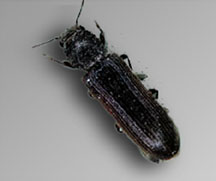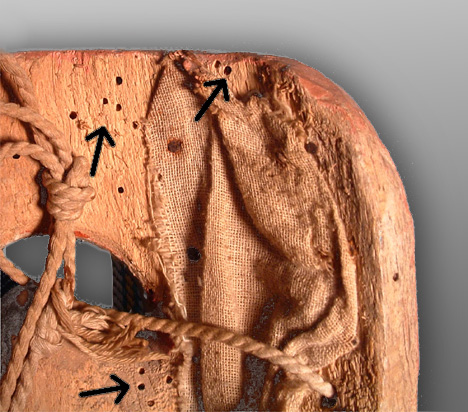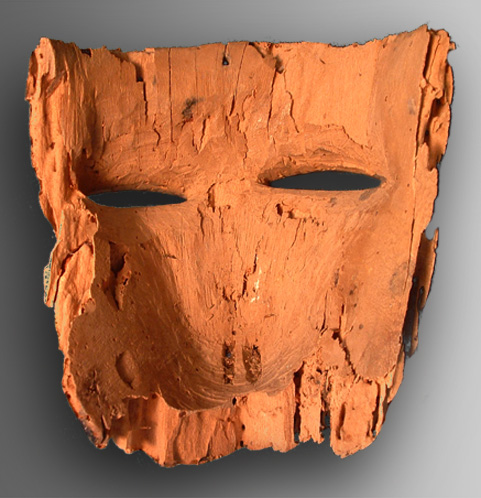|
What
your mama never told you about the Powder Post Beetle |
|
||||||||||

The Powder Post or "Lictus" Beetle The destructive little insect which is so frequently found in Mexican masks is of the Lyctus (Lyctidae) or the Anobiidae variety of Powder Post Beetles. The precise type of beetle in a wood piece can vary with the type of wood and whether it is a hardwood or softwood. As mask collectors, we don't really need to be experts in entomology to deal with this - we just have to know how to get rid of them quickly and economically. If this is your wish, you are in the doctor's office. Alternate ways of getting rid of the bugs Sure, you can chamber fumigate your masks with a professional extermination company - but it's quite expensive and requires two trips to some strange location. Radiation sterilization (as used with some non-refrigerated milk) might be an option but again there's the cost factor. Heating them up at a low oven temperature such as 130 degrees F for at least 24 hours kills most insects, but there is risk for damage to the paint of a mask. Forget about freezing them out - It's never worked for me and I don't think it's a reliable method. Last, several new liquid and spray insecticides have come on the market in the last 20 years. With some, residues and odors can be a problem and the best ones are expensive. The best way I know The most reliable and trouble-free method I have ever used is to fumigate the pieces at home myself, using moth crystals or moth balls (paradichlorbenzine) inside several layers of sealed plastic trash bags, and leaving them outside in the hot sun for a week or more. I seal up to ten or more pieces in large bags with the crystals dispersed in the bag. If crystals get on the actual masks it doesn't seem to matter. Three or four bags are used inside each other, sealing them well to keep the vapor inside. Then I place them in the backyard of my house in the open sun. The heat of the summer sun helps the process as the crystals evaporate and the vapor fumigates the pieces. If you are nervous about the odor of the chemical, placing the bag up on the roof of a garage keeps any smell away from people. Okay now, I think some law says I need to mention that the paradichlorbenzine in the moth crystals is possibly ever so smidgenly carcinogenic. But I don't think there's a serious risk if you work quickly and with gloves and try not to breathe the vapor too much. People have used mothballs and mothcakes in their homes for a long, long time and I don't know of anyone who has died from it. But if you are squeamish, you'd better ask your physician first. Anyway, just leave the sealed bags out for a week to ten days and I doubt you will ever see the bugs again. When you open the bags you may see some unfortunate fleeing Lyctus beetle families in the bottom of the bag, some of the crystals will have evaporated and you need to brush off and air out the pieces completely. The chemical will leave entirely as with mothballs on clothes - within a few days. It goes away without a perceivable trace and no damage to paint has occurred to any of my pieces so far - and the beetles have never returned after using this method. © 2002 www.mexicanmasks.us - All Rights Reserved |

